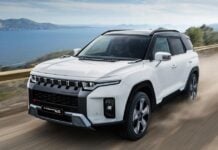Chinese automaker BYD is phasing out its signature rotating infotainment displays in favor of fixed, landscape-oriented screens. The decision, announced by BYD Vice President Stella Li, stems from limitations in compatibility with popular smartphone integration systems like Apple CarPlay and Android Auto. While the rotating screens were a distinctive feature, their functionality was restricted by software designed for a traditional landscape layout.
Why the Change?
The rotating screen initially served as a differentiator for BYD’s vehicles, offering drivers the choice between portrait and landscape modes. However, BYD found that actual usage of the rotating feature was low, despite positive customer feedback. The company’s shift reflects a broader trend in the automotive industry: prioritizing seamless integration with existing mobile ecosystems over novel hardware gimmicks.
According to Li, the move is also driven by deeper partnerships with tech giants like Apple and Google. Locking the screen orientation simplifies the development and implementation of CarPlay and Android Auto, ensuring a smoother user experience. BYD’s upcoming Atto 2 will be the first model to ship with this change, with other vehicles expected to follow suit.
Trade-Offs and Future Plans
BYD acknowledges that the rotating screen offered benefits in certain scenarios, such as improved navigation in portrait mode. However, the company found that most users preferred the landscape orientation, aligning with industry standards. The decision underscores a pragmatic approach: sacrificing a niche feature to maximize compatibility and streamline software integration.
This change coincides with BYD’s aggressive expansion plans, particularly in Europe. The company intends to double its retail presence across the continent by 2026, aiming for approximately 1,000 retail locations. Prioritizing user-friendly tech integrations is likely seen as a key factor in attracting mainstream customers in competitive European markets.
BYD’s decision highlights the tension between automotive innovation and the practical demands of modern software ecosystems. While unique features can generate buzz, seamless connectivity often takes precedence for consumers.





































